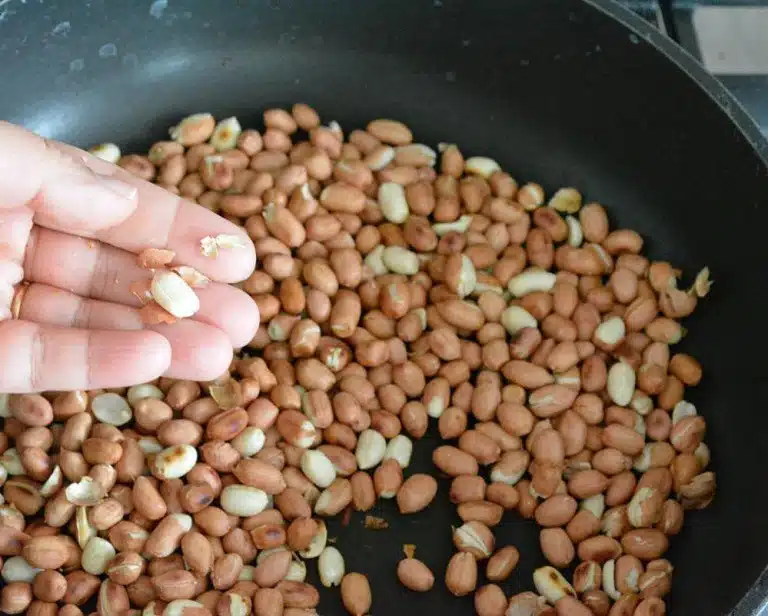These sabudana tikkis are naturally gluten-free and vegan and make an excellent grain-free diet on fasting days, such as Navratri, Janmashtmi, and Mahashivratri.
Sabudana vadas are easy to prepare, and even the novice can make them comfortably following the super-easy guide provided below. Crispy from the outside and soft from the inside, these delicious Sabudana vadas are best enjoyed with green chutney, dip, or tomato sauce. As it is high in carbohydrates, it keeps the stomach full for longer and provides an energy boost during long fasting days. Therefore, it is preferred as a fasting food and is used for preparing dishes like Sabudana Khichdi, Sabudana kheer, Sabudana vadas, etc., during fasting.
This recipe of sabudana vada, also known as Sabudana Tikki or sabudana cutlet, is a savory dish made with sabudana, boiled and mashed potatoes, and a few flavorful herbs and spices. Crushed peanuts add a lovely crunch and a dose of nutrition to this carbs-rich recipe. This Maharashtrian snack can be relished as breakfast, a mid-afternoon snack, or a tea-time snack at any time of the year. These delightful crispy bites are kids-friendly and can also be packed in the lunch box.
Uses common ingredients Excellent grain-free diet on fasting days A family favorite, and Can be enjoyed at any time of the day!
The best part, it’s a perfect make-ahead recipe. Sabudana tikkis can be prepared in advance and stored for later consumption. And being scalable, they can be prepared in a big batch and served to a crowd as well.
Potatoes — These are added to the vadas for more volume and creaminess. Potatoes also help bind the other ingredients together in the recipe. Peanuts — Add a fascinating nutty texture to the cutlets besides the delightful flavor and essential nutrients that make the recipe so irresistible. Almond flour can be used in place of peanuts, but then expect a difference in taste. Herbs and Spices — Cilantro leaves, cumin powder, red chili powder, and salt add tons of flavor and zest to the recipe! Oil — Oil is used for frying the cutlets. You can use any neutral flavored oil that doesn’t overpower the flavors of the other ingredients.
Soak Sabudana — Soaking the sabudana pearls is an essential step as this ensures a successful preparation of the vadas. Soaking gives proper hydration to the sabudana, which is needed for the vadas to fry properly. If not properly hydrated, vadas will burst open in the oil. So, always soak the Sabudana for at least 4 – 5 hours or until they double in size, become fluffy, and are easy to mash when pressed between thumb and index finger. They should feel soft, with no hard part in the center. For proper binding — Use cold potatoes for making the cutlets mixture as the starch in the cold potatoes settle once they are refrigerated. This binds them well with other ingredients in the mix and prevents them from falling apart when they are fried. The peanut-power — Besides adding extra crunch to the vadas, peanuts also perk up the nutrition of this recipe. Peanuts are powdered and added to the vada mix; as such, they help absorb any extra moisture. Replace peanuts if intolerant — If you do not like peanuts or have an intolerance for them, you can omit to add them or replace them with almond flour or cashew flour. Shaping the sticky dough — Sticky mixture will not be easy to shape into cutlets. If the vada dough feels sticky while binding, greasing your hands and then shaping them will do the trick. Fry in batches — Do not overcrowd the pan while frying the sabudana cutlets, as flipping will become difficult, and they may break in the process. They will also not get enough space to fry properly. Therefore, it is best to fry them in batches to give them room to get flipped easily and fry evenly. If vadas break in oil — Vadas can break in the oil following any of these reasons- either it needs more binding or it has excess moisture. To fix this, add more potatoes to the mix or any vrat flour to it to reduce the excess moisture. For additional flavors — This sabudana vada is a fasting recipe for vrat; therefore, it is mildly spiced. If you are not using it as a vrat recipe, feel free to add ginger powder, turmeric, and chaat masala to pump up the flavor and make it spicy and tasty. Flavorful add-ins — Feel free to experiment with this sabudana vada recipe if you are not preparing it for fasting. Consider adding some baby spinach leaves and mashed carrots to the vada mix for a flavorful and nutritional boost! Appe pan/ paniyaram pan Method — To prepare your sabudana vadas, first heat the appe pan/Ebleskiver pan on medium-low heat. Now, add a few drops of oil into each mold and place a sabudana vada in each cavity. Cook covered for 4 to 5 minutes. Once cooked to a golden brown hue, flip them one by one and cook again till the other side is also crisp and golden.
Follow the step-by-step instructions below to make the best Sabudana Vada Recipe
Healthy, hearty, and irresistibly delectable, this recipe is a must-try! So, shall we start? Should you make this Sabudana Vada recipe, please let me know your thoughts by sharing your comment below. And don’t forget to share it with your family and friends.
CRAVING FOR MORE, TRY THESE OTHER NAVRATRI DELICACIES:






























































